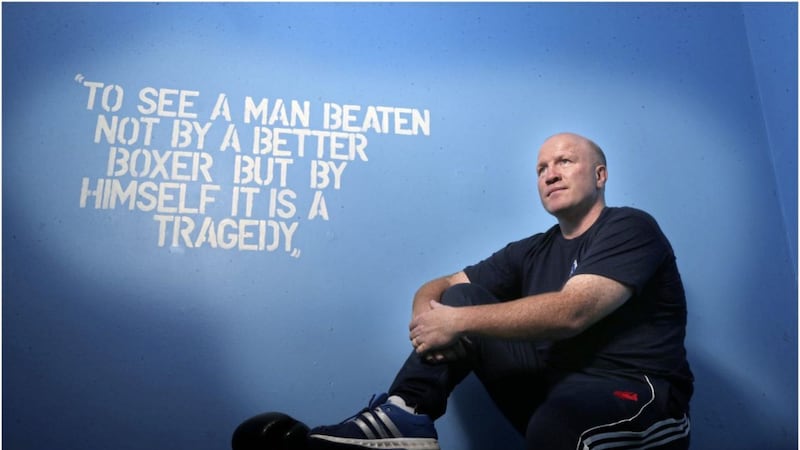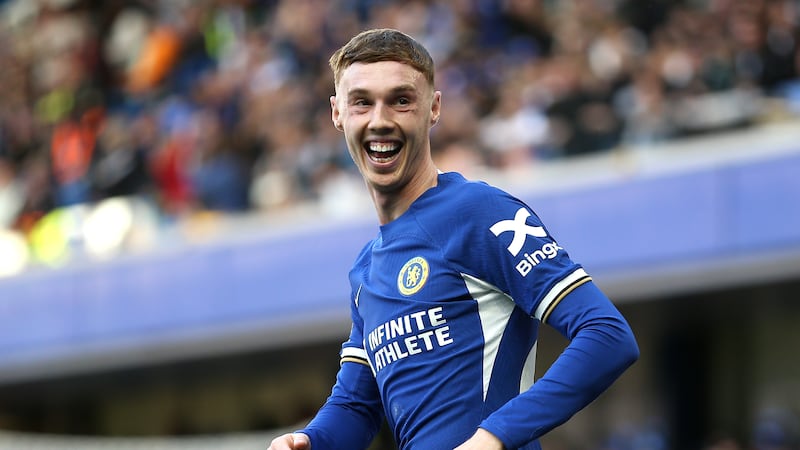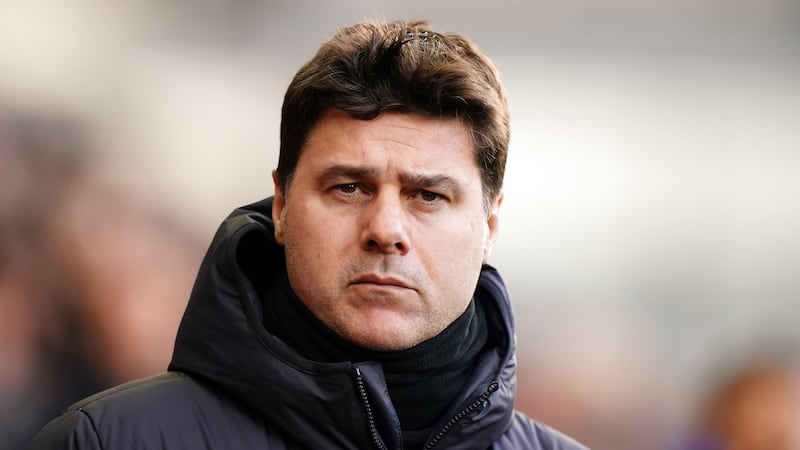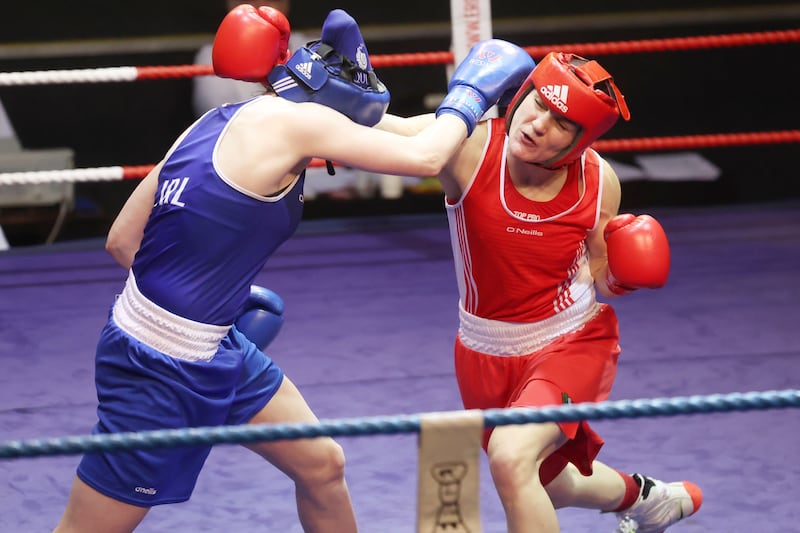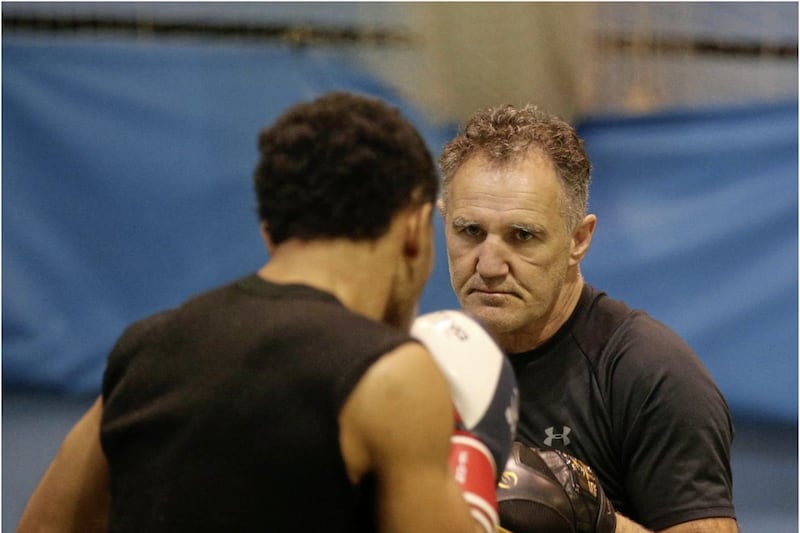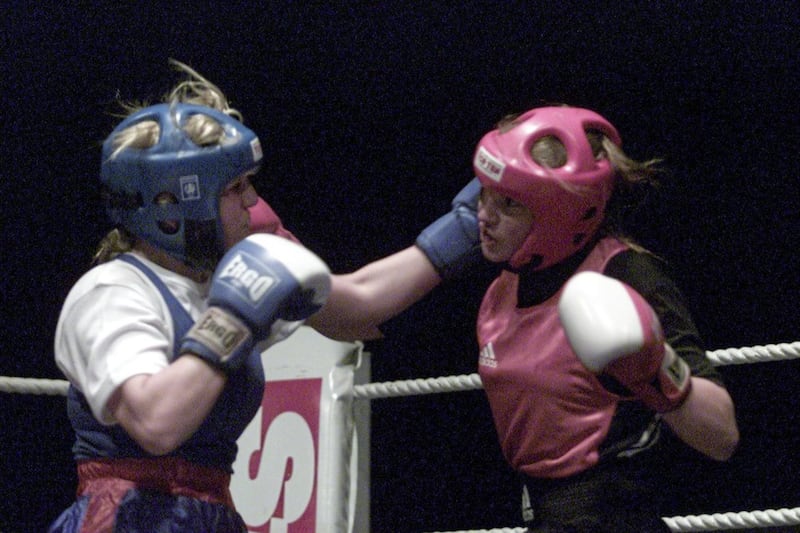THERE was the MGM Grand in Las Vegas during his first year as a pro. The famous York Hall, the Point, the King’s Hall, Pairc Ui Chaoimh the night Steve Collins cemented his dominance over Chris Eubank.
Yet nothing Michael Carruth experienced during an underwhelming professional career came anywhere close to rivalling his achievements with the vest, and especially that magical moment inside Barcelona’s Pavelló Club on August 8, 1992.
Almost 27 years on, and with the next Olympic Games just a year away, he remains the only Irishman to return from the greatest show on earth with a boxing gold medal around his neck.
It was a journey that started the day an eight-year-old Carruth, after his first fight at Greenhills Boxing Club, promised his father Austin that one day he would be Olympic champion.
“And when I am,” he said, “it will be for you.”
The first major steps along the road to Barcelona would begin inside the National Stadium and, for all the places around the world Carruth would box thereafter, few inspired such feelings of excitement and dread in equal measure.
Making the short journey from the changing rooms, up the steps up into the arena and then down towards the ring, familiar faces dotted around the front rows, it never got any easier from schoolboy to senior.
“Oh Jaysus, it was scary,” he says, looking around the creaking South Circular Road venue.
“I had that nervous moment alright, but then you still did even as you moved through the ranks because you wanted to win your titles.
“But we were fortunate as youngsters too because all the county Dublin championships were held in here, so we kind of had a heads up on a lot of the country boys and the northern lads as well.
“Because, y’know, when you’re 11 years old and you’re going into combat against a Dublin club, we would’ve already had the taste of it. That’s squeaky bum time once you’re in there, but we were more used to it than the rest.”
Nowadays, as a coach with Drimnagh BC and the Irish Athletic Boxing Association, Carruth can still be spotted at the stadium on a regular basis.
Standing alongside brothers Martin and William watching the national elite semi-finals night earlier this year, the Carruth triplets would be hard to miss despite lurking in the shadows between the two tuck shops.
And when they’re inside these walls, memories of ‘Aussie’ are seldom too far away.
“My da was the timekeeper here; that was one of his first roles.
“We used to come down with him as little kids - me and my brothers - and sell the programmes, especially if there was an international on.
“We weren’t allowed into the boxing until all the programmes were sold, there could’ve been 50 programmes... you nearly ended up buying the last couple yourself with all the tips you got just so you could get back inside and watch the boxing.
“One of my earliest memories was an American team coming to box Ireland and you’re looking at these guys and they looked like superstars - there was just that bit of stardust. The Irish gave as good as they got, and you went away from nights like that wanting the same thing.
“When you were coming in you were looking at the likes of Philip Sutcliffe and Kieran Joyce saying ‘I want to be the next one here’. You’d be coming down, looking at those guys and thinking ‘I’m going to be in that ring one day’.”
His time would come, of course, with Carruth donning the green vest against Hungary in late 1984, making his international bow against a man who had been around the block more than a few times.
And plotting his demise from the opposite corner, unknown to the young Dubliner, was a bona fide legend of the fight game.
“That was my first international here,” he says.
“I boxed a guy called Robert Gonczi from Hungary - I was only 17 and they deliberately didn’t tell me he was a three times European bronze medallist at senior level, so he was handy. I got into the fight and I did what I do best; I counter-punched him, I moved him...
“I beat him and when I went over to their corner, his coach slapped me on the face and said ‘I’m going to keep my eye out for you’.
“It turned out to be the great Laszlo Papp.”
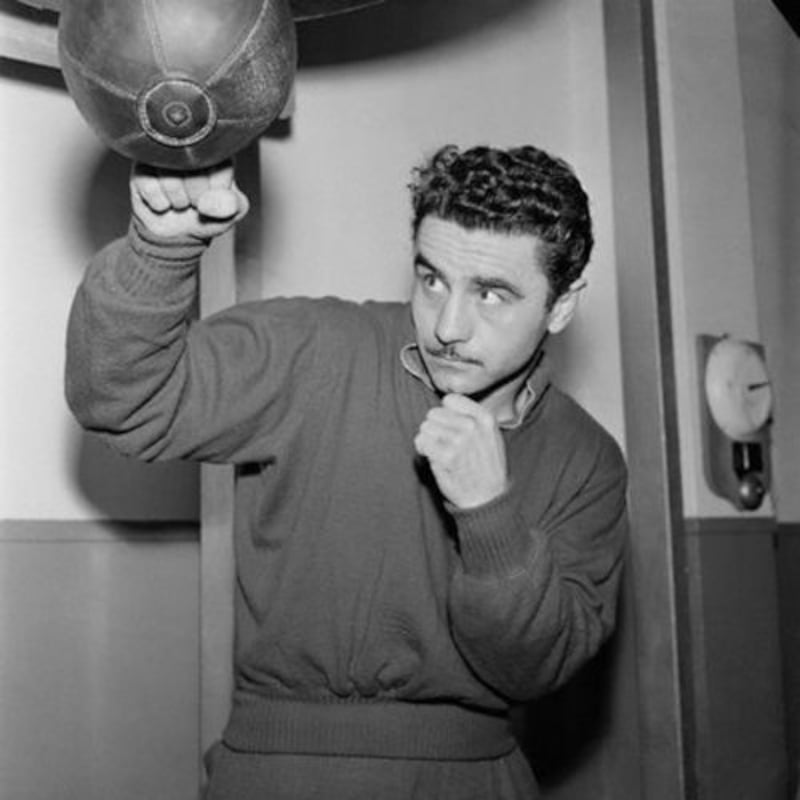
A stylish southpaw from Budapest, Papp won gold medals at three consecutive Olympic Games from 1948 to 1956, becoming the first boxer to do so. Only the great Cubans Teofilo Stevenson and Felix Savon have since matched that feat.
And, eight years after catching his first glimpse of a teenage Carruth at the National Stadium, Papp was in Barcelona for his finest hour, watching from the wings as he defeated the fancied Juan Hernandez in the welterweight final.
“Laszlo was there with the Hungary team when I won the gold medal,” recalls Carruth.
“He actually came into the dressing room after I beat the Cuban and do you know what he said? ‘Hey, I took my eye off you!’ It was a great moment.”
After signing with promoter Frank Warren, Carruth would go on to box twice more at the National Stadium – winning both - as his pro career drew to a close.
By then, though, the thrill, the buzz and the relentless ambition of his younger years had gone. He remembers little of those nights and, when asked to pick through his favourite memories of the old place, they aren’t even in the running.
Instead, Carruth is drawn instantly to his last ever contest as an amateur – the homecoming fight to celebrate that 1992 Olympic success. In classic Irish fashion, a mixture of politics and poor organisation led to a delay but when it finally happened, a moment was created that still swells the chest today.
“That probably eclipses everything,” he says.
“I remember saying to my dad about it on Christmas Day in 1992, we were going to run it as a club show for Drimnagh, and he picked the date - the 26th of February. He said ‘who do you want?’
“Eddie Fisher from the Holy Trinity club in Belfast had made a few chosen remarks because I didn’t fight in the national championships - ‘I would’ve loved to get Michael Carruth’, all that. So I thought ‘here’s your chance’.
“We put it to Mickey Hawkins, he said yeah, and we fought here on the 26th of February 1993. The place was absolutely packed, you couldn’t get another person in; I’ve never seen it so packed.
“I won, and I said to my dad after that was the last time I’d fight as an amateur, which it was. It’s funny how things turn out then because on that same date - the 26th of February - in 2011, my father passed away.
“I wasn’t promoted right as a pro but it was a long time before I got back in here. I would’ve sold out this place every time but Frank Warren had Prince Naseem and he didn’t need anybody else.
“For me though, I never dreamt of becoming a world champion as a professional; I dreamt of becoming an Olympic champion. So I fulfilled my dream and I got to celebrate that here, where so much of the journey began.”
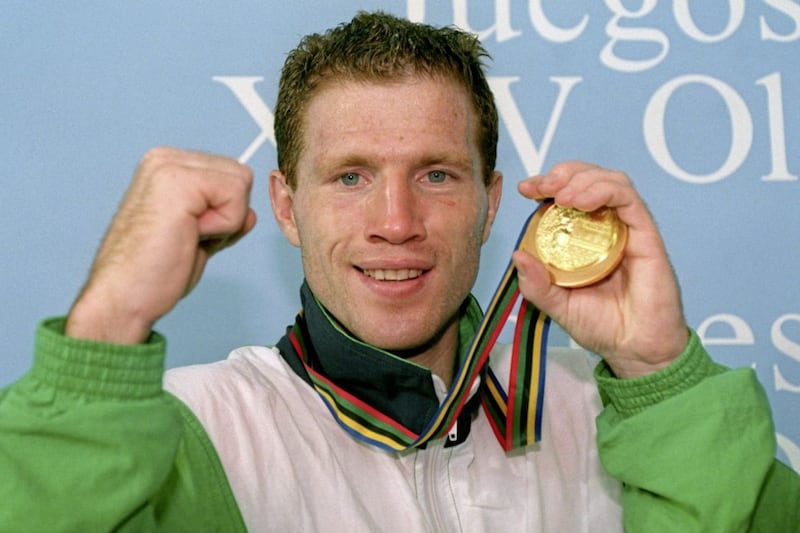


THE National Stadium opened on Wednesday, March 1 1939 and was marked by great pomp and ceremony.
The chief guest on the night was the Minister for Defence, Frank Aiken TD, but it fell to the Venerable Archdeacon Grimes PP to deliver the official blessing. Aiken's speech paid tribute to the role that boxing played in Irish society, and suggested that “it is with no little pride that Irishmen will show foreign visitors this splendid building”.
Pointing out that Irishmen had won 568 of their 981 international amateur bouts, Aiken took pride in reminding the crowds that the site of the stadium had been a derelict a year previously and congratulated those “from every part of Ireland whose generosity, brains, skill and hard work had contributed to the completion of the building”.
The spectators in the arena that night were then treated to a display of physical fitness by soldiers and then four juvenile bouts to christen the new ring.
With a capacity of 2,400 (together with 98 seats in the members' gallery), the National Stadium was built for Dublin’s hosting of the 1939 European Championships. It was located on 25,000 square feet of land at the Griffiths Barracks site which leased to the IABA.
The arena was based on the Liverpool Stadium and contained the most up-to-date showering and changing facilities, together with the novelty of running water at ringside, as well as an electric light board which displayed the round numbers as the fights progressed.
* This is an excerpt from ‘The Little Book of Irish Boxing’ by Belfast author Barry Flynn
